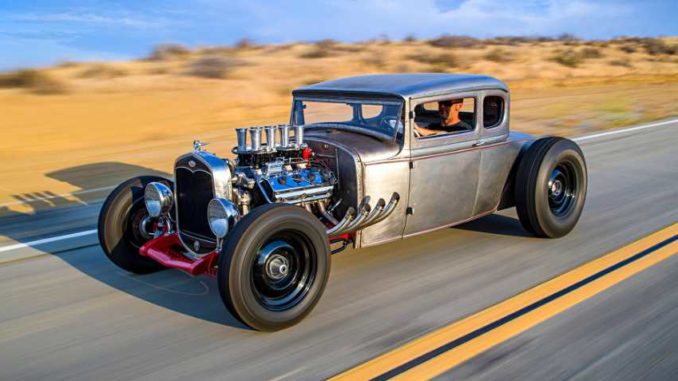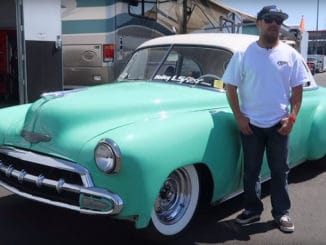
Good defensive driving skills will reduce the chances of an accident while driving. This article aims to teach drivers to anticipate dangerous situations despite the errors of others, or in adverse conditions.
Here are some general safety instructions:
Assume The Worst
Drivers are trained to think about the worst-case scenario. For example, drivers are taught to expect that a vehicle indicating that it will turn will not actually turn. Vice versa, drivers should also expect that a vehicle not indicating a turn will unexpectedly turn. Also assume that any red stoplights or stop signs may be ignored.
Drivers should assume that other drivers are not capable of preventing an accident, and to watch out for drivers using cell phones while driving.
Drivers should also assume that their vehicle has not been seen by other vehicles on the road. Think motorcycle.
Maintain Road Presence
Drivers are encouraged to scan the road ahead and be ready for any possible events and to keep an eye out for any other vehicle’s indicators or brake lights.
Drivers should maintain road discipline and avoid ‘car bunches’. They will either head the ‘car bunch’ or be at the end of it.
While driving behind larger vehicles, drivers are trained to keep their line of sight clear, and to adjust their rearview mirrors as well as to avoid tinted window panes, keeping their windows transparent and clear.
Drivers should scan the road for any bicycles, motorcycles, pedestrians, potholes, animals, objects, or debris on the road.
While You Are Driving
- Don’t drive either too fast or too slow.
- Never do a U-turn on a freeway
- During bad weather conditions, always put on your vehicle’s fog lights, as some weather conditions can cause a lack of visibility. The fog lights should also be switched off as soon as the visibility improves.
- While driving, your hands should be in the 9 O’clock and 3 O’clock position. This position is known to be the safest hand position while driving.
- Always maintain an exit route by keeping the space on both sides of their vehicles free.
- Drive on the outer lane of the freeway. This makes it possible to back out or stop quickly in case of any problem in the vehicle.
15 Defensive Driving Secrets That Can Save Your Life
- How to avoid a car accident 0:29
- Always keep the right distance 0:55
- Look further 1:13
- Use clutch and brake in the winter 1:34
- How to drive in fog 1:56
- ABS VS. no ABS 2:23
- How to drive when drifting 3:08
- Check the road 4:21
- Divide by two 4:48
- The surface road 5:11
- Pick a side 5:36
- Higher gear 5:51
- Don’t overestimate other drivers 6:05
- Have an emergency plan 6:32
- Use car technology wisely 7:04
Video Summary
Where danger can come from.
The places where people brake more often are usually the most slippery: before turns, pedestrian crossings, and bus stops. You should keep the same speed there and start braking early.
Keeping the right distance.
In winter, the distance between two cars should be two times bigger than in summer. But don’t leave too much space because someone else will want to get in the middle.
Looking further.
Don’t look only at the car in front of you. Keep it in your sight, but also look further — 4-5 cars further.
Using clutch and brake in the winter.
In winter, you shouldn’t push the clutch pedal together with the brake pedal. In this case, the wheels can get blocked and the car will be put into a drift.
Driving in fog.
Make sure your headlights are on but don’t use high beams. Those will reflect off of the vapor in the air and only make things worse.
ABS VS. no ABS.
ABS Car Owners: The anti-lock braking system neutralizes the brake pedal on icy roads if you push it too fast and too hard. Instead of braking suddenly, the system causes the pedal to vibrate, so you can turn the wheel and put it in the initial position.
None ABS Car Owners: The best way to brake in winter is using the brake pedal together with the downshift speeds. You should push the brake pedal shortly and then fully unblock the wheels. Repeat before the full stop.
How to regain control when drifting.
If your car starts drifting, don’t panic and don’t hit the brake pedal! Another mistake most people make is wrenching the wheel round and in this way over-compensating.
Check the road.
When driving on winter roads, hit the brake pedal and let it go several times. If you feel that the car stops, the road is good; if you don’t, it means that the road is icy. Do this as often as possible. Make sure you aren’t creating dangerous situations, of course.
Divide by two.
If in summer you can drive at 80 miles per hour, then in winter, you should drive at 40 miles per hour. This way, you will make sure that you will have enough time to react if your car starts drifting.
The surface road.
On any road, try to drive the car so that all 4 wheels are on the same surface.
Pick a side.
To avoid bounces between the walls of a deep track, push either the inside or the outside part of the wheels against the wall.
Higher gear.
On an icy road, you should drive in a higher gear. Again, take the summer norm and increase the gear by one when you’re driving in winter.
Don’t overestimate other drivers.
People will speed, drive on red, and not let you merge from time to time. Staying alert for others to make mistakes is an essential defensive driving trick.
Have an emergency plan.
Always leave enough space around your car to swerve to safety if you should. An emergency plan and an escape route in mind provide extra safety for you.
Use technology wisely.
Use planners available for your smartphone to make sure you never forget to have your wheels changed. Set a reminder right now, so every October you will be reminded that it’s time you thought about your safety.




